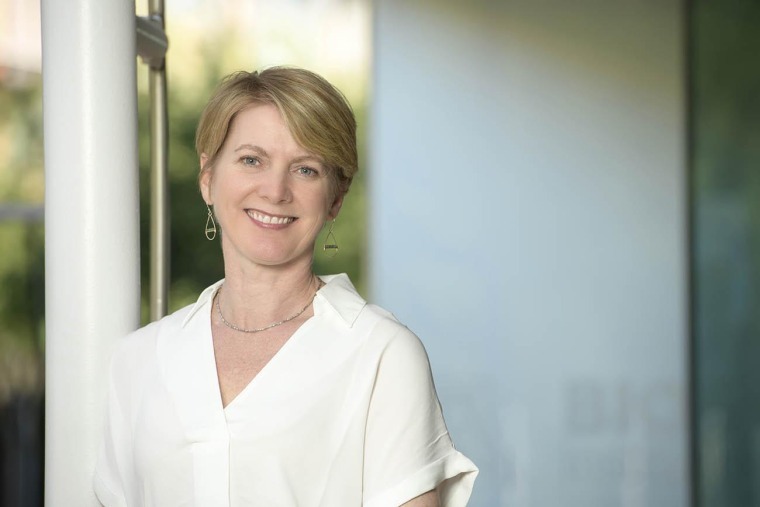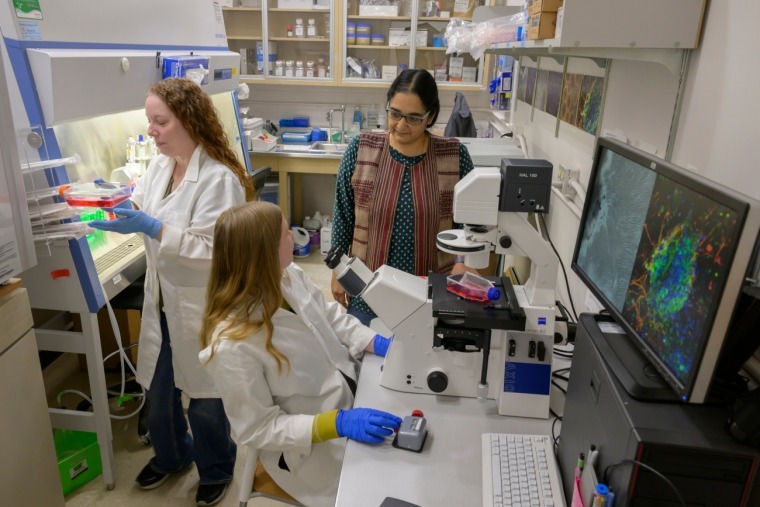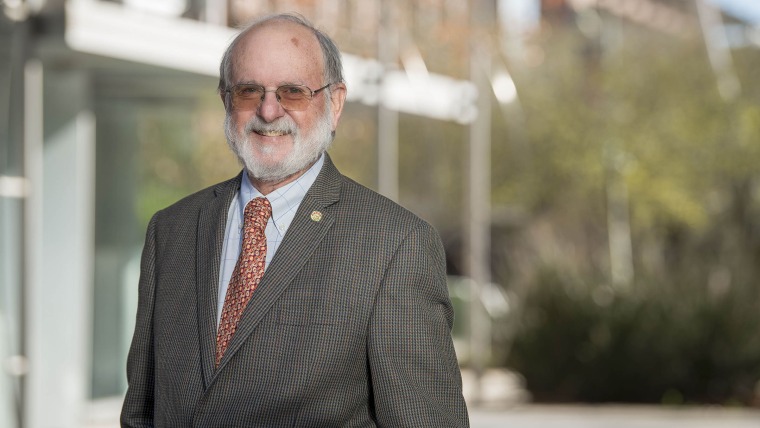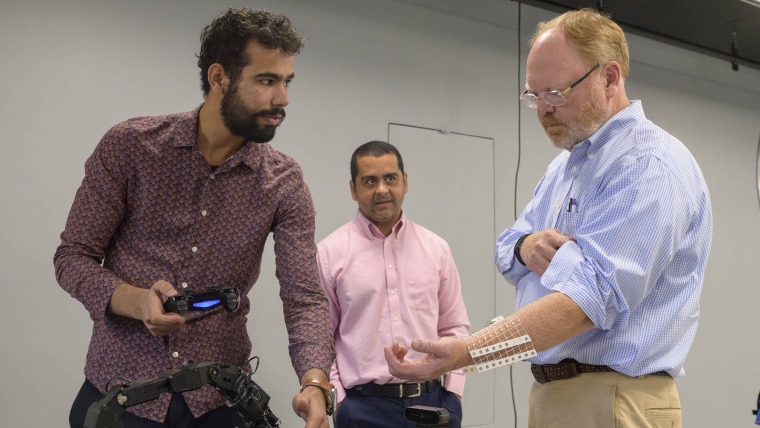Revolutionizing liver tissue engineering and transplants

Induced pluri-potent stem cells (iPSC) are widely used in therapeutics for disease modeling, regenerative medicine, and drug discovery. Using patients’ cells, scientists can regenerate their cells into iPSC and recreate new organs for patients who need them. Amy Randall-Barber from the BIO5 Institute was joined on Science Talks by Dr. Ekta Minocha, a 2023 BIO5 postdoctoral fellow working in the Jason Wertheim lab at the University of Arizona College of Medicine – Tucson. Dr. Minocha's work focuses on the development of bioartificial liver tissues. She hopes that one day they can replace a failing liver in the human body and expedite the waiting time associated with organ transplants.
This interview has been edited for length and clarity.
ARB: Let’s start with a couple of ice-breaker questions as usual. Do you have a hidden talent? If so, what is it?
Yes, I like doing embroidery and glass painting. I remember, when I was in school during my summer vacations, I used to do embroidery on cushion covers and pillow covers. I also gave my grandma a handkerchief which I embroidered as a gift. And gifted a few glass paintings to my friends and relatives.
ARB: So, now I know that you like embroidery! What other kind of designs do you like to make?
I like making flowers and embellishing items like cushion covers or pillow covers with mirrors and colorful threads. I enjoy adding different types of stitches to make them beautiful.
ARB: Who is your favorite Disney character and why?
Mickey Mouse is my favorite Disney character. I like him for his cute smile, innocence, and kindness.
ARB: Would you rather travel to the past or the future?
I would like to travel to the future because I am a curious person. I want to know what is going to happen in the future.
ARB: So, what brought you to the University of Arizona and BIO5 Institute from India, where you attended Sanjay Gandhi Post Graduate Institute of Medicine?
Since my school days, I have always had a passion for science, particularly biology. The concept of how a single cell can develop into a whole individual has always fascinated me. So, I decided to pursue my passion for science by getting a doctorate degree in the field of stem cells and tissue regeneration.
As I was nearing the completion of my thesis, I learned about Dr. Jason Wertheim's research at the University of Arizona, which aligned perfectly with my interests and expertise in stem cells and regenerative medicine. I applied for a postdoctoral position in his lab, went through the interview process, and was fortunate enough to be selected.
I have found the environment here to be incredibly supportive, with people open to collaborations and exciting research happening at the University of Arizona and BIO5 Institute.
ARB: Ah, that is good to hear about stories of such exciting research happening. Can you tell us about your overall research goals? Or the overall research goals of Dr. Wertheim’s lab?
The overarching research objective is to create transplantable liver tissues capable of repairing or replacing failing organs, thereby reducing transplantation waiting times. To achieve this goal, I am focused on generating liver organoids, miniature organs in a dish that mimic the functions of a normal liver. Particularly, I am utilizing these organoids to model a liver disease known as non-alcoholic steatohepatitis (NASH) and to investigate the underlying mechanisms of this condition.
ARB: Does Dr. Wertheim's lab only work on liver?
In addition to liver research, Dr. Wertheim's lab also works on kidney studies and is involved in bioprinting and the development of bioartificial scaffolds.
ARB: Can you tell us about your specific project in the lab and how you became a part of that project?
Yes, my main project is developing liver organoids. So, I am using these organoids to model liver disease called nonalcoholic steatohepatitis. And I am also using them to understand the underlying mechanisms of how this disease is caused.
So, the long-term goal is to see whether we can transplant them into patients. Right now, I am waiting to see whether these liver organoids have the potential to be transplanted into animals to assess their functionality and engraftment abilities.
ARB: Can you tell us what challenges you've had during some of your experiments over your time in science?
Yes, working with induced pluripotent stem cells, or iPSCs, is quite challenging, as everyone knows. We come to the lab every day to change the media. Plus, iPSCs are like spoiled children! They behave differently, sometimes, you do everything in an analogous way, following the same pattern. But the next day, you come to the lab and see that all the cells have died. There is no apparent reason for this, but iPSCs behave that way. So, the major challenge is culturing iPSCs and working with them. Since our starting material is iPSCs, we must depend on them. They must grow better so we can make the organoids to progress our research.
ARB: So where do you get these IPSCs from?
We acquired some iPSCs from a stem cell bank in California. Additionally, we reprogram some of them from patients with NASH (nonalcoholic steatohepatitis). For this, we collect peripheral blood mononuclear cells (PBMCs) from NASH patients or patients undergoing liver transplantation. The reprogramming of PBMCs into iPSCs is conducted at Northwestern University, where we collaborated with Dr. Richard Green.
Once we obtain the stem cells, we perform experimental work here at the University of Arizona.
ARB: You were a 2023 BIO5 postdoctoral fellow. Can you share how you first discovered this opportunity and discuss how the fellowship supported your project?
I learned about the BIO5 postdoctoral fellowship opportunity through my mentor, Dr. Wertheim. He encouraged me to apply for the grant.
The specific aim of the fellowship was to investigate the interrelationship between innate and environmental factors in non-alcoholic steatohepatitis (NASH). To achieve this, I used IPSC-derived hepatocytes and cultured them under various stiffness conditions to explore how the environment influences their behavior. This research focused on understanding the connection between innate biological factors and environmental drivers in the development of NASH. We observed that changes in stiffness altered the lipid species and influenced the gene expression levels of genes responsible for lipid production.
ARB: Can you tell us how close we are to being able to use the tissues that you have developed for organ transplants in place of traditional organ transplants?
Currently, we are still in the preclinical trial phase, so there is still a long way to go before we can proceed to clinical trials for transplantation. Induced pluripotent stem cells offer numerous benefits but also come with limitations. One significant challenge is their inherent heterogeneity and the variability observed from batch to batch. For example, in liver organoids, we expect the major cell population to be hepatocytes, but sometimes we observe an abundance of non-parenchymal cell types instead. Overcoming this batch-to-batch variation is crucial before considering transplantation into patients.
ARB: Thank you for doing this important work. Eventually, you will nail this and be able to heal many people hopefully. So, do you have a mentor that has impacted your life?
Yes, certainly, I have been incredibly fortunate to have had outstanding mentors throughout my life. My parents have been my biggest mentors, providing unwavering support, encouragement, and motivation every step of the way. I owe a great deal of gratitude to them for their constant guidance.
Additionally, during my educational journey, I have been privileged to have mentors like Dr. Soniya Nityanand, Dr. C.P Chaturvedi, Mr. Vinod Pandey, and Leena Chatterjee, who have played pivotal roles in shaping my path. Here at the University of Arizona, Dr. Jason Wertheim has been a remarkable mentor. His guidance, motivation, and inspiration have been instrumental in my growth and development. Working under his mentorship has truly helped me refine my skills and abilities.
ARB: Yeah, I can only imagine what it must be like to be in your shoes, pursuing a PhD and then working for Dr. Wertheim. His work is renowned, and he is known to be a brilliant and wonderful man! Do you think you will stay at the University of Arizona, or you will go elsewhere?
I'm a J1 scholar, so I am subject to a two-year home residency rule after completing my current program. Therefore, I will be heading to India for the next two years. During this time, I will be seeking job positions in India while also applying for grants here. My long-term plan is to pursue faculty positions in India.
ARB: Do you already know who you would like to work with in India?
I will see, there are positions, I will apply for them, but they are extremely limited.
ARB: Well, I'm sure they will be glad to have you and everything you have learned while you were here. Can you elaborate on why you do what you do? What got you into it?
Liver cancer is a significant cause of mortality, and currently, transplantation is the primary therapeutic option available to patients. However, this approach has limitations, particularly the need for a matched donor.
Therefore, my focus is on developing transplantable liver tissues using the patient's own cells to avoid rejection. If successful, this could revolutionize treatment by providing alternative therapeutic options and significantly reducing transplant waiting times.
This is the driving force behind my work—to offer hope and innovative solutions to patients suffering from liver cancer.
ARB: Well, thank you so much for being here with us today and telling us about your work. Do you want to share anything about your work or time here at the university?
It has been an incredible experience collaborating with some amazing researchers. Dr. John Purdy has been instrumental in our lipidomics work, while Dr. Nathan Cherrington, a mentor during my postdoc, has been invaluable for our studies on drug metabolism.
Additionally, we are exploring the impact of flow on organoids through microfluidics research, with assistance from Dr. Yitshak Zohar from the aeronautical and mechanical engineering department.
The collaborative atmosphere here is truly remarkable. People are helpful and open to collaboration, which makes it more enjoyable. Science thrives on collaboration, doesn't it? I would also like to add that Dr. Wertheim always encourages collaboration. He is consistently open to collaborations and promotes me to take on leadership roles during collaborative meetings, encouraging me to explain my work and contribute actively.
ARB: That's wonderful. Well, thank you again for being here. We really appreciate your time and you for sharing your information about your project and your story.










